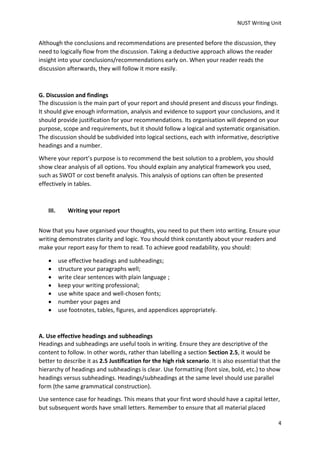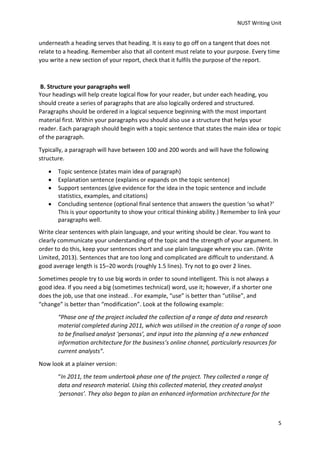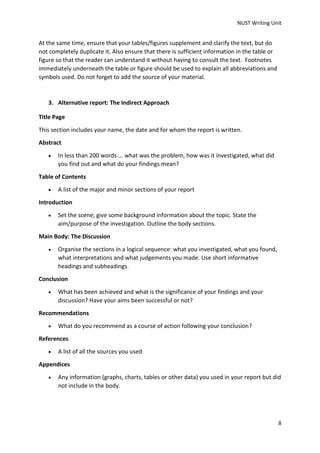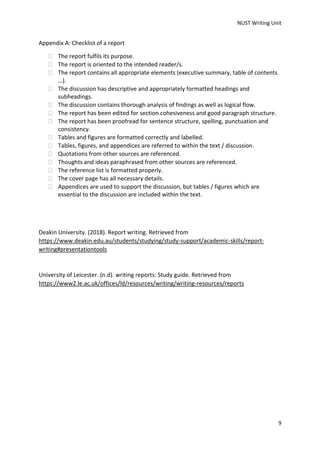This document provides guidance on writing reports. It discusses that reports are written for a clear purpose and specific audience to address an issue and recommend a course of action. There are various types of reports such as technical, business, field, and scientific reports. The report writing process involves planning, structuring, and writing the report. Key elements of a report include an executive summary, introduction, findings/discussion, conclusions, and recommendations. Headings, paragraphs, and plain language should be used to ensure good readability.








